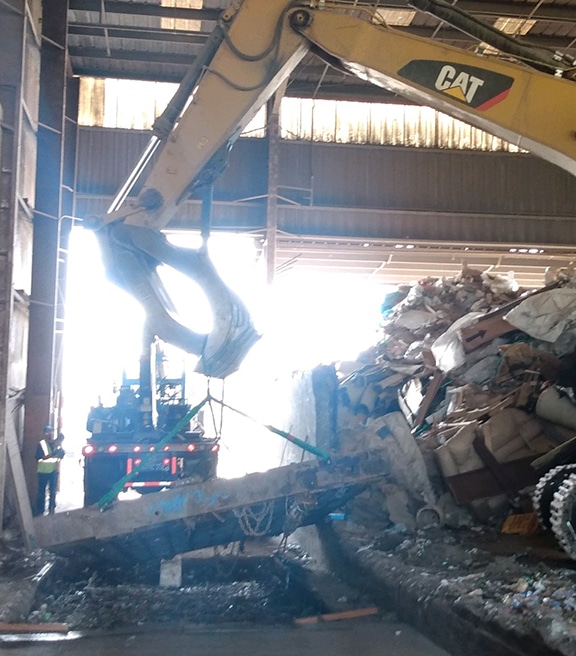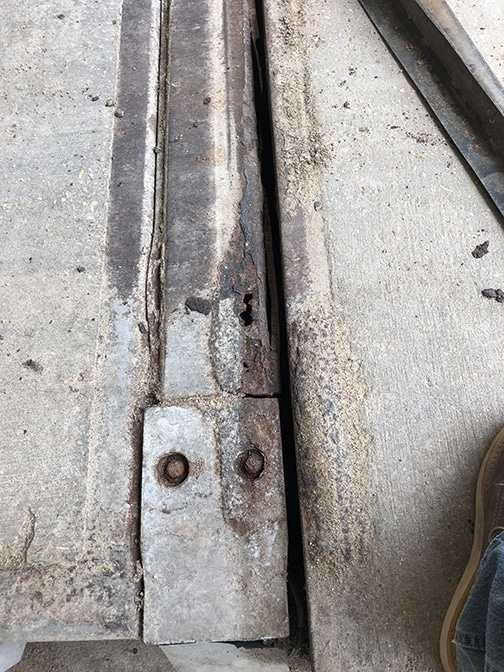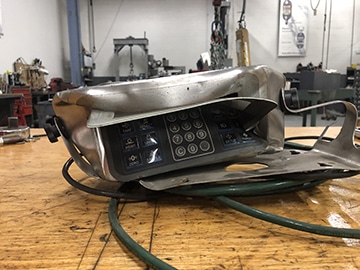Reduce Risk to Your Weighing & Measurement Equipment
Typically, risk reduction is a top priority in any industrial operation. Workers can reduce risk by taking safety precautions, wearing the appropriate safety gear, and using the right equipment for the job. These are all ways to keep your employees safe during operations, but how can you protect your equipment to ensure you get the longest useful life out of your investment? Here are some actions you can take to reduce the risk of damaging your equipment throughout its life.


Reduce Risk with Proper Cleaning
Speaking of cleaning, ensuring that workers understand how to properly clean scales & measurement equipment is important. In the food & beverage industry, it could mean the difference between producing a safe product & exposing the general population to a bacteria outbreak. Washdown safe stainless steel scales are typically designed to be opened, so that every nook and cranny of the scale can be sprayed with high pressure water. This is to ensure that every possible surface can be safely cleaned and decontaminated.
Truck scales require regular cleaning for a different reason. Truck scales must be able to move freely to produce accurate measurements. This is true for both pit scales and weighbridges. (See picture of pit scale during cleaning service)
If debris, such as mud or garbage, piles up underneath a scale, it will prevent vertical movement. A truck scale that cannot move freely will not produce accurate weights. Inaccurate truck scale measurements can put a business at risk in many ways. First, the business owner could lose money by not taking advantage of every available inch of cargo area during shipments. Second, an overweight truck is not only illegal, but due to the extra strain put on wheels, axles and bearings, it’s dangerous to the truck driver & other drivers on the road.
Spraying the truck scale off isn’t enough, as water can pool under the T-Belting, causing the steel to rust. If employees hose off the scale to clean it, they should remove any detachable accessories after washing to allow the scale to dry completely. (See picture of rusted steel truck scale covers. T belting has not been removed after washing to allow the steel to dry)
Education Helps With Risk Reduction
Ensure workers understand the specifications and limitations of weighing & measurement equipment. For instance, only stainless steel scales should be used in food & beverage processing environments because all equipment will need to be thoroughly cleaned & decontaminated daily. Stainless steel will hold up to that constant cleaning, so you can depend on the accuracy of your measurements. The same scale, made of another material such as mild steel, will not be able to survive the constant exposure to water and cleaning solutions.
Education also helps ensure that precision measurement devices are being used as intended. Explaining the inner workings of a torque wrench helps ensure the user understands that the shaft of the wrench is delicate. In doing so, a manager might reduce the chance of the wrench being tossed around, or used inappropriately. Explaining to workers the value of the equipment they are using can greatly help reduce the risk of equipment becoming damaged.

Smashed digital weight indicators
Reduce Risk With Proper Placement & Storage
For scales, proper placement of the scale, indicator, and any other accessories is imperative to reduce the risk of it being run into, run over, or otherwise damaged. Truck scales use guard rails to keep trucks from running off of the scale. Truck scale kiosks are typically mounted on poles to keep them safely out of the way. Sometimes, bumpers are installed around floor scales to prevent lift trucks, vehicles, or employees from running them over.
Precision measurement devices are not typically installed. However, while proper placement may not be an issue, the method of storage most certainly is. Precision instruments are sensitive to their outside environment, especially moisture. From rust to electronic shorts, moisture can cause irreparable damage. Reduce risk to your precision measurement devices by storing them properly after each use. You can learn more about that in our blog post here: Dimensional Tool Care Tips.
Preventative Maintenance
Regularly scheduled preventative maintenance could save you thousands of dollars. Weighing & measurement equipment requires TLC just like anything. Bearings wear out, electrical shorts happen, even steel rusts over time. Precision measurement devices such as calipers & torque wrenches require maintenance & regular calibration as well. Taking the time to schedule proper cleaning and have a professional scale technician check all points of your scale can definitely increase the longevity of your equipment.
Consider Your Warranty
Don’t use your equipment in a way that is not covered under standard use in your warranty. Warranties are meant to build confidence in consumers by assuring them the equipment they purchase will work as designed. That of course follows the assumption that the customer has purchased the equipment designed for their environment & application. Most quality weighing & measurement equipment manufacturers offer a 1 year warranty on electronic devices. Warranties on larger, heavy capacity industrial scales typically have longer life spans. Check with your weighing & measurement equipment provider on the warranty before purchasing new tools.
The easiest way to reduce risk to your equipment is to educate your team on how it works, what factors can affect performance, its value, and proper care techniques. Michelli Weighing & Measurement service technicians can explain the best practices for preventative maintenance, as well as any issues they might notice while on site. Our experts are here to show you what measurement can do, and an important part of that process is showing you how to take care of the equipment.
Reduce Risk. Schedule your preventative maintenance service today
Contact Michelli Weighing & Measurement today to request a quote. Our experts can help you reduce risk by establishing a regular preventative maintenance routine to ensure the longest working life for your equipment.
